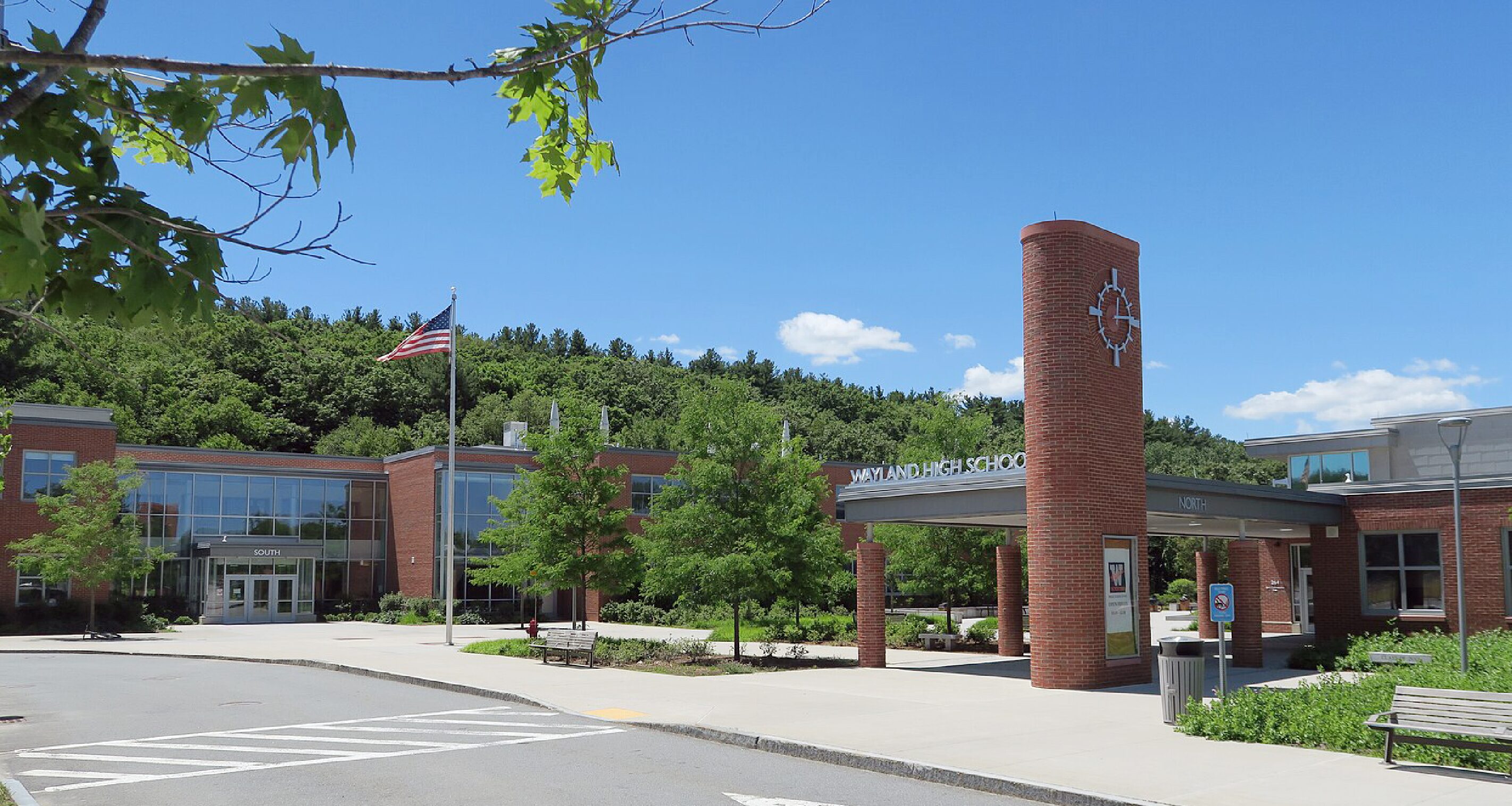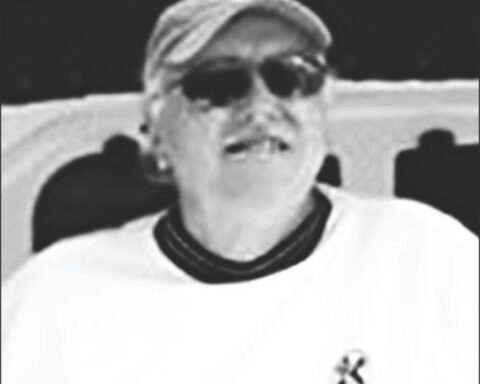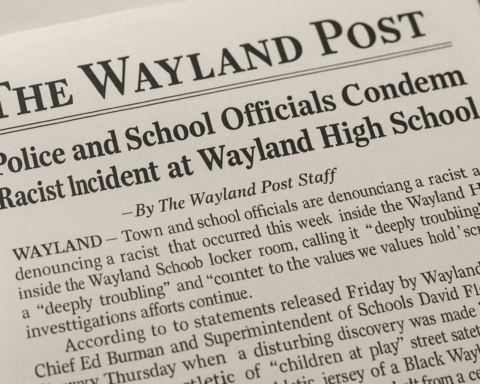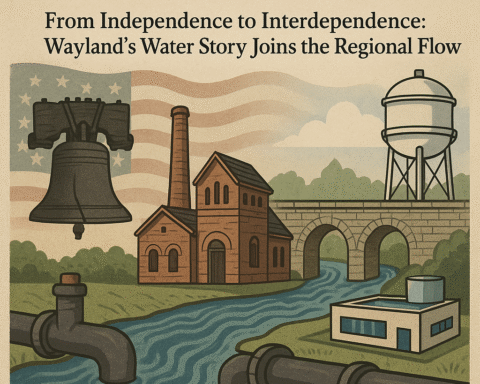After a $1.3 million shortfall last year triggered a nine-month spending freeze and a scramble to close the gap, Wayland Public Schools is boosting its budget by $2.4 million for the coming year. The nearly $55 million proposed budget aims to fend off another deficit and alleviate pressure on the district, according to School Superintendent David Fleishman.
“We knew last year that our budget was very tight,” he said. “Our budget is still tight, but right now we have a little more breathing room, and we think we’re okay.”
Fleishman said that he’s conscious of Wayland’s tax limits when he creates the budget. Under state law, the town is prohibited from increasing taxes by more than 2.5% plus new growth each year. To obtain additional tax revenue above the 2.5% cap, voters must pass a tax override at town meeting, which Fleishman acknowledged is a challenge that he might have to take on as soon as the next budget year.
“Certainly, it’s not an easy thing to go ask voters to, you know, pay more than their two and a half percent increase,” Fleishman said. “On the other hand, if we want to keep offering a rich educational program and a high level of services, and we’ve hit our tax levy, there’s not much more that we can do.”
Out-of-district special education enrollment was last year’s main budget strain — a 64% increase over budget led to a $1.2 million shortfall. The non-personnel budget for special education, which includes out-of-district tuition and transportation, will increase by 26.3%, or $848,912, this year.
The district’s out-of-district enrollment will decrease by four students this year, as some students age out of services at the end of the 2025 school year. The FY26 budget, however, does not include the costs of services for another four students who are on pending lists for out-of-district services. Those projected costs are estimated at an additional $600,000.
Facilities maintenance was another source of last year’s deficit. The district spent an unbudgeted $87,000 on custodial overtime, supplies, septic services, and HVAC repairs, contributing to the shortfall. Last year, the budget allocated $1.41 million for maintenance. This year, the district will increase the budget by 9.98% to $1.6 million.
“Because of our aging buildings, we had some expenses that weren’t budgeted, but next year, we have an increase to address the ongoing needs of our aging buildings,” Fleishman said. “And that’s not enough, but it’s certainly more than we budgeted last year.”
Fleishman emphasized that student service needs and facilities may still pose surprise costs. “Areas that we’re most vulnerable on will be if we have an issue with our buildings, and certainly student services is the other area where we can be vulnerable,” Fleishman said. “But we think right now, things are looking positive and okay in that area.”
Personnel costs comprise 83% of the school budget. They increased by 2.74% this year, 2 percentage points less than the previous year, due to staff consolidation. Fleishman said the town will uphold its employee contracts, which include a 2.75% cost-of-living-adjustment pay increase for teachers. With 575 teachers, this will increase the budget by $500,000 and does not include funds awarded for attainment of additional certifications or degrees, etc.
Officials also agreed to increase the workweek for elementary teaching assistants to 30 hours. Currently, secondary teaching assistants have a 30-hour work week, while elementary assistants are paid 29.25 hours per week.
The district tried to keep student services consistent, given the mandate to shrink staff, Fleishman said. “I think the big challenge was, knowing that we had to reduce some positions, how could we make this all work, knowing we would have fewer positions?” he said. “We were able to do that.”
This was accomplished through attrition. Nine Wayland teachers retired this past year, and school administrators will either reduce or not fill six of those positions. They include 3.2 positions at the high school — one full-time social studies teacher, a part-time physics teacher, and a part-time special educator. Fleishman said the personnel changes at the high school might increase the student ratio in “a handful” of classrooms. At the middle school, one retiring English teacher will not be replaced, though this change won’t affect class sizes, he added.
Falling enrollment was another factor in the district’s decision to reduce personnel. Enrollment has dipped from 2,707 in 2020 to 2,575 this year, a net loss of 127 students. With this in mind, the district eliminated two kindergarten sections for the upcoming school year.
Wayland will decrease student services administration by eliminating a part-time out-of-district coordinator position, three elementary special education teachers, a part-time special educator at the middle school, and a part-time elementary speech language pathologist. Duties for all these positions will be redistributed among their departments. “Through being strategic, we’re quite hopeful that the student experience will be comparable to what people are used to,” Fleishman said.
However, two additional staff members were added in a few other areas of the school district. They are hiring a new part-time preschool special education tester to evaluate students up to three years old at The Children’s Way, and a district-wide new data specialist position in the IT department.
Another cost-saving measure took place at the elementary school level, where Wayland is eliminating its summer literacy and math programs. According to the Superintendent’s Budget Report, the Title I funding needed to be reallocated to the high school.
“While this was a difficult decision, the need to redirect Title I funding to the high school would have forced us to halve our services” for the summer program, the report says. “We did not think the academic outcomes in half the time would be impactful enough to warrant the funding, particularly given the high level of student absenteeism in the [summer] program last year.”
The U.S. Department of Education provides financial assistance to schools for low-income students through Title I, which was created “to ensure economically disadvantaged children receive a fair, equitable, and high-quality education, by helping to close academic achievement gaps.”















